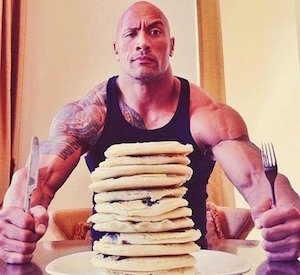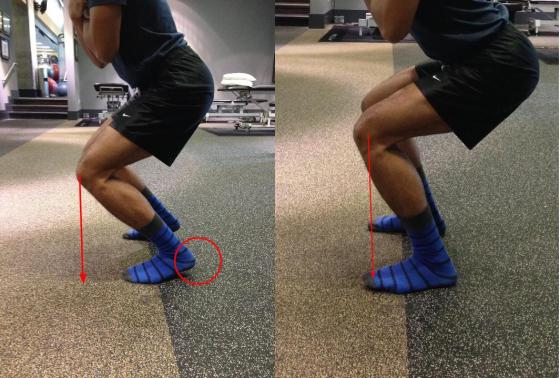How to eat
You need to eat EVERYTHING.
Carb, protein, fats — they’re all essential to your body; the key is moderation.
You need to eat at the right TIME.
Don’t starve when your body needs energy, and don’t over-eat when you have enough.
Timing your meals allow you to stay full on less food. Your diet should fit your needs.
Diets are not one-size-fits-all.
Everyone’s bodies, lifestyles, diets, and dieting goals are different.
A weight loss diet for one person might lead to weight gain for another.
Healthy dieting requires:
TIMING (of meals)
VARIETY (of foods)
BALANCE (of nutrients)
MODERATION (of portions)
Meat – Lean steak, mostly red meat. I use to eat a lot of turkey and I still do sometimes but the farming process on turkey isn’t the best thing for our body take in, so try go for organic turkey. Lean red meat like sirloin steak is better for the body to digest. However avoid pork. Our cows and pigs are fed crap that it makes their meat less healthy for the body.
Proteins – eggs, tuna, organic turkey breast, salmon, lean beef, veal, tofu, mature soybeans, almonds, pumpkin seeds, greek yogurt, almond milk are an excellent source of pure protein
Fruits and Vegetables – Everybody needs vitamins, this is a requirement to be a healthy person in general. Eat a wide variety of them. Remember the more colorful the better. Bananas, Broccoli, Spinach, Blueberries, Apples, Oranges, Cherries, Carrots.

Liquids – Water, water, water! One gallon a day is the minimum for everybody in general. Two to three gallons is a must if you workout hard and/or live in a hot state. Again, this is a minimum, if you can drink more, do it. Stay the hell away from alcohol, it will slow you down, fatten you up, and put you in more situations where you are likely to be straying away from the healthy lifestyle!
Fats – Honestly, this has more to do with your genetic makeup than anything. If you have a body that builds up fat easily, stay away from saturated fats for at least five days out of the week. Mono and poly unsaturated fats are good.

Break down your calorie intake into:
55% – Carbs
25% – Fats
20% – Protein
Try to maintain that balance.
Knowing WHEN to eat, is as important as knowing WHAT to eat.
Our #1 problem is figuring out when to eat. (Most people know what to eat. Fruits are good, junk foods are bad, etc) If you’re eating healthy but still not losing weight, it’s probably your timing that’s off. If you don’t eat at the right time, it matters very little whether you eat healthy or not–because the food gets transformed into fat anyway!
The #1 diet problem is not eating when the body needs food,and then over-eating when finally eating.… so when do we eat?
Your body is constantly using energy, spiking its energy use during your workout. Your diet should follow your energy use as closely as possible.

Bad diet plan of eating 3 big meals a day.
Over-eating converts surplus nutrients to fat. Fewer meals leaves you hungry & weak in between meals starving often leads to more overeating.
One of the biggest diet mistakes is waiting too long in between meals. If you wait till your stomach is grumbling, your body is already starving (decreased energy and recovery rate).
Extreme hunger is usually countered with the next diet mistake, over-eating, which increases fat storage. One mistake usually leads to the other, putting your body in a vicious cycle of starvation (decreased metabolism) followed by periods of over-eating (fat gain).

Good diet plan of 6 meals a day
Smaller meals keep you energized and full throughout the day. Snacks keep you from starving during long workouts and in between meals. smaller meals keep your metabolism high while avoiding over-eating. Eating smaller meals more closely matches your body’s energy use. Your biggest meals are in the mornings and the one before your workout. Smaller meals keep you satisfied without putting extra calories into you.
Start eating before you get too hungry. Stop eating before you get too full.
Biggest Meal in the Morning
Breakfast is the most important meal of the day. It’s the first supply of nutrients for your day and kickstart your body’s metabolism. Once you have a full breakfast, you can make it through the rest of the day on smaller meals to avoid getting hungry. Don’t be silly and skip breakfast as part of your weight loss plan. This leaves you hungry and sends your body into starvation mode (decreasing metabolism), making it stingy for energy and storing everything you eat as fat. You need to have energy to start your day; you need to eat good breakfast.
Breakfast AFTER Your Morning Run
If you do your runs in the morning, it’s best to eat breakfast after that. First off, running on a full stomach is a terrible idea. Secondly, running on an empty stomach helps you lose weight because your body will be burning off stored fat instead of the food you ate that day. It’s not necessary to do your runs in the morning, but the common belief is that it burns off fat stored from the previous night and energizes you for the day.
Aside from breakfast, the workout meal is the second and only other big meal on your training day
1. No sugar
2. No saturated fat
3. Cut the bread out of your diet
4. Don’t combine foods (burgers, sandwiches, etc)
5. Eat things separate, for an example: a can of tuna
6. Think before you eat. Ask yourself why? Are you really hungry?
7. Take it as a challenge and be proud of yourself for taking care of your body.
8. Motivate yourself. You have a photo shoot of your body that will be posted on facebook in two weeks. What are you going to do about it?
Improve your diet…not your supplements.











